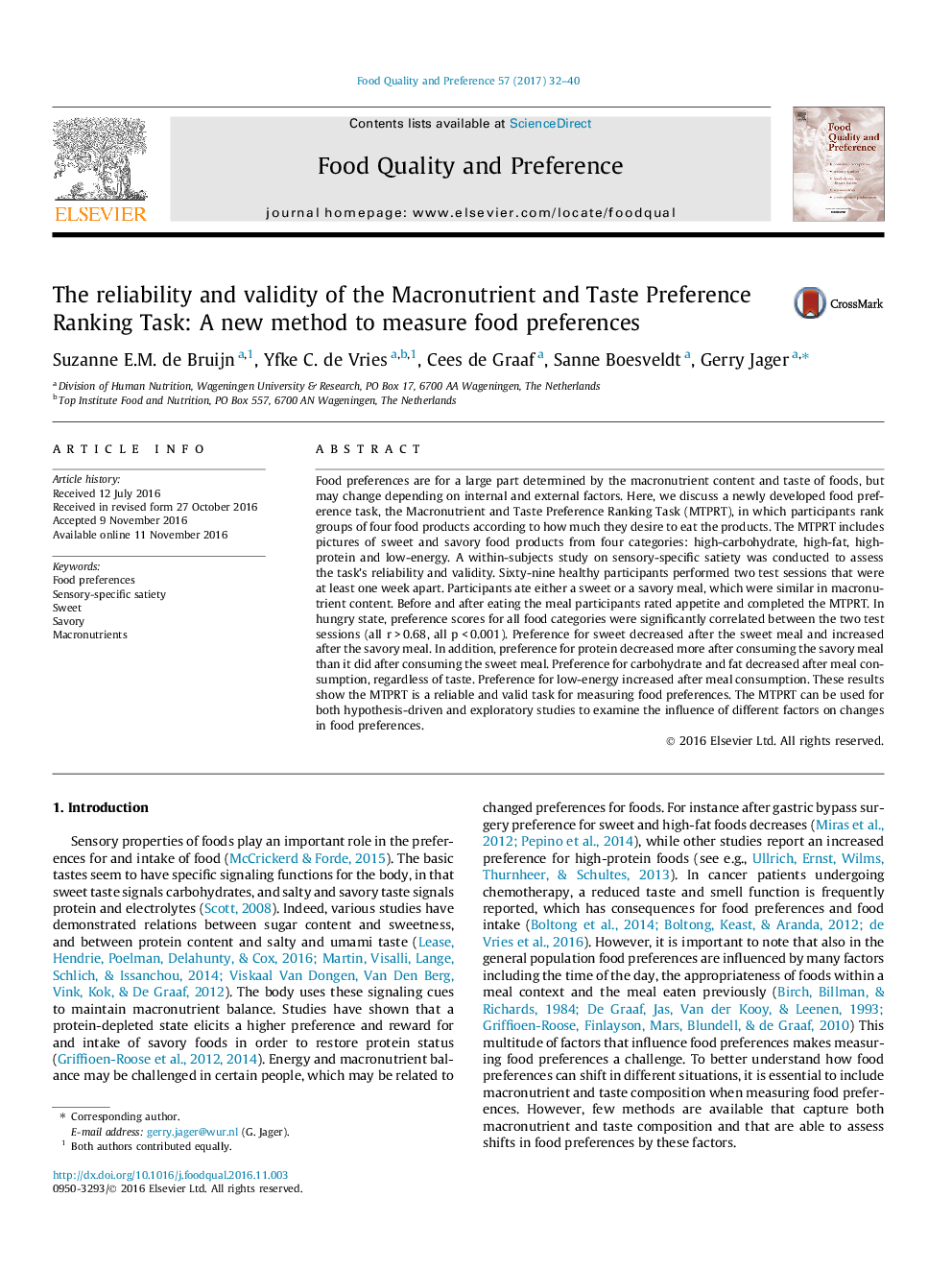| Article ID | Journal | Published Year | Pages | File Type |
|---|---|---|---|---|
| 5736061 | Food Quality and Preference | 2017 | 9 Pages |
â¢We developed a food preference task based on taste and macronutrient categories.â¢This method shows good test-retest reliability.â¢This method shows good discriminative ability for induced sensory-specific satiety.â¢This method can be used to study how different factors influence food preferences.
Food preferences are for a large part determined by the macronutrient content and taste of foods, but may change depending on internal and external factors. Here, we discuss a newly developed food preference task, the Macronutrient and Taste Preference Ranking Task (MTPRT), in which participants rank groups of four food products according to how much they desire to eat the products. The MTPRT includes pictures of sweet and savory food products from four categories: high-carbohydrate, high-fat, high-protein and low-energy. A within-subjects study on sensory-specific satiety was conducted to assess the task's reliability and validity. Sixty-nine healthy participants performed two test sessions that were at least one week apart. Participants ate either a sweet or a savory meal, which were similar in macronutrient content. Before and after eating the meal participants rated appetite and completed the MTPRT. In hungry state, preference scores for all food categories were significantly correlated between the two test sessions (all r > 0.68, all p < 0.001). Preference for sweet decreased after the sweet meal and increased after the savory meal. In addition, preference for protein decreased more after consuming the savory meal than it did after consuming the sweet meal. Preference for carbohydrate and fat decreased after meal consumption, regardless of taste. Preference for low-energy increased after meal consumption. These results show the MTPRT is a reliable and valid task for measuring food preferences. The MTPRT can be used for both hypothesis-driven and exploratory studies to examine the influence of different factors on changes in food preferences.
